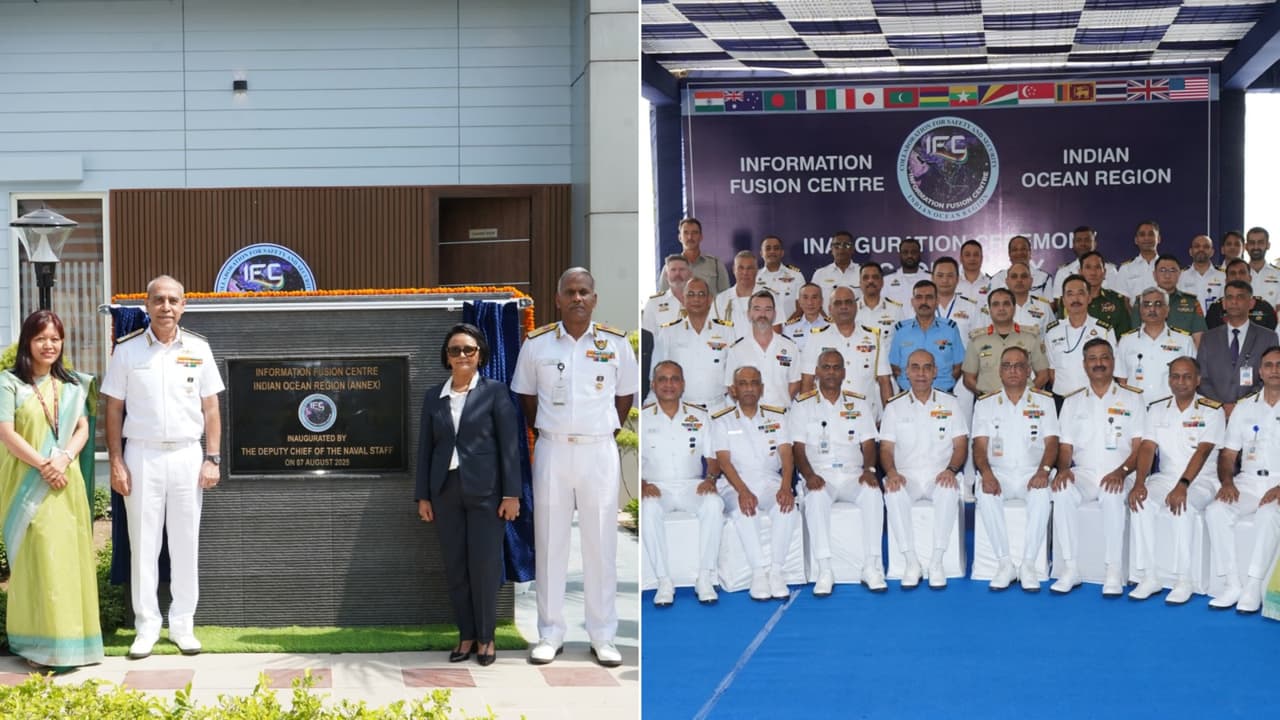The Indian Navy has inaugurated advanced infrastructure at IFC-IOR in Gurugram to host liaison officers from 26 nations and launched MANTRA software to enhance maritime surveillance across the strategically vital Indian Ocean Region.
New Delhi: Fostering collaborative maritime safety and security for a peaceful, stable and prosperous Indian Ocean Region (IOR), the Indian Navy on Thursday inaugurated state-of-the-art infrastructure at Gurugram-based IFC-IOR, which will facilitate hosting of International Liaison Officers (ILOs) from 26 partner countries. Inaugurated by the Indian Navy’s deputy chief of naval staff, Vice Admiral Tarun Sobti, the presence of ILOs at the newly created infrastructure at IFC-IOR would ensure prompt information sharing and expedites coordination of operational responses.
In addition, “the newly launched IFC-IOR Software – MANTRA (Maritime ANalytics Tool for Regional Awareness) will further strengthen Maritime Domain Awareness by providing robust monitoring of commercial shipping activities throughout the region,” the Indian Navy PRO Captain Vivek Madhwal said.
Subscribe
Know about IFC-IOR
Established in December 2018, the Information Fusion Centre-Indian Ocean Region (IFC-IOR) has steadily grown into a vital regional maritime information hub, fostering collaboration, coordination and commitment towards a common goal that is ensuring maritime safety and security across the vast and dynamic Indian Ocean Region.
A unique Centre where International Liaison Officers (ILOs) from partner nations collaborate to counter challenges to maritime safety and security, the IFC-IOR actively collaborates with 54 other maritime security constructs and another 28 partner countries towards ensuring a peaceful, stable and prosperous IOR.
IFC-IOR’s mission aligns seamlessly with the tenets of Mutual and Holistic Advancement for Security Across the Regions (MAHASAGAR), underscoring the need for security, stability, and prosperity in the Indian Ocean Region.
Background
Indian Ocean Region (IOR) stands as a vital maritime crossroads, facilitating the movement of more than two-thirds of global oil shipments, one-third of bulk cargo and half of the world’s container traffic. This immense economic and strategic significance is underpinned by complex maritime security challenges. IOR faces persistent threats from piracy and armed robbery, trafficking of narcotics and weapons, illegal, unreported and unregulated (IUU) fishing, irregular human migration, and hybrid threats, all of which jeopardise the safety of sea lanes and disrupt regional stability.
Addressing these evolving challenges demands a collaborative approach, uniting regional navies, security agencies and partner nations through data fusion, information-sharing and robust monitoring of illicit maritime activities.
